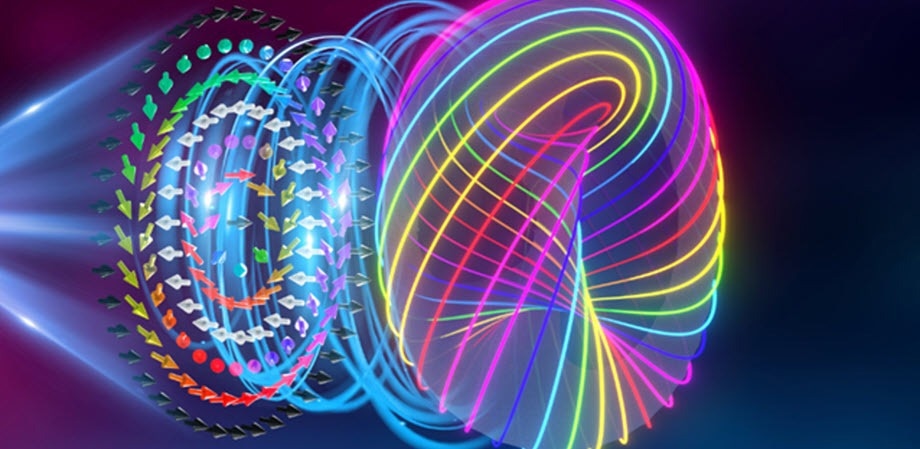A new, highly uncommon, structured-light family of 3D topological solitons, called the photonic hopfions, have been reported by scientists. Here, the topological numbers and topological textures could be tuned in a free and independent manner.
 Light can be shaped into a structure resembling a twisted smoke ring. Image Credit: Y. Shen and Z. Zhu.
Light can be shaped into a structure resembling a twisted smoke ring. Image Credit: Y. Shen and Z. Zhu.
In the day-to-day lives of humans, it is possible to repeatedly find a localized wave structure that retains its shape on being subjected to propagation—imagine a smoke ring flying in the air. Identical stable structures have been studied in several research fields and can also be found in nuclear systems, magnets, and particle physics.
Unlike a ring of smoke, they could be made flexible to perturbations. This is called topological protection in physics and mathematics. The nanoscale hurricane-like texture of a magnetic field present in magnetic thin films is a typical example. These act as particles—that is, not altering their shape—known as skyrmions.
Identical doughnut-shaped (or toroidal) patterns present in 3D space, envisioning complicated spatial distributions of several properties of a wave, are known as hopfions. It is highly elusive to obtain such structures using light waves.
Studies performed in recent times about structured light disclosed powerful spatial changes in phase, polarization, and amplitude. This allows the comprehension of—and sets the stage for changes in designing—topologically stable optical structures acting like particles.
Great potential might be exhibited by such quasiparticles of light along with control of diversified topological properties—for instance, as next-generation information carriers for ultra-large-capacity optical information transfer, and also in quantum technologies.
As stated in the Advanced Photonics journal, collaborating physicists from China and the UK recently illustrated the generation of polarization patterns together with designed topologically stable properties available in three dimensions, which, initially, could be controllably changed and propagated in free space.
As a result of this perception, various considerable progress and new perspectives are provided.
We report a new, very unusual, structured-light family of 3D topological solitons, the photonic hopfions, where the topological textures and topological numbers can be freely and independently tuned, reaching far beyond previously described fixed topological textures of the lowest order.
Yijie Shen, Study Lead Author, University of Southampton
“Our results illustrate the immense beauty of light structures. We hope they will inspire further investigations towards potential applications of topological protected light configurations in optical communications, quantum technologies, light–matter interactions, superresolution microscopy, and metrology,” stated Anatoly Zayats, project lead and professor at King’s College London.
This work offers a theoretical background to the beginning of this family of hopfions and their experimental generation and characterization. This shows a rich structure of topologically safeguarded polarization textures.
Contrary to earlier observations of hopfions that have been localized in solid-state materials, this study illustrates that, counterintuitively, an optical hopfion could propagate in free space with topological safety of the polarization distribution. The strong topological structure of the illustrated photonic hopfions upon propagation is repeatedly sought in applications.
In other branches of physics, this newly developed model of optical topological hopfions could be extended easily to other higher-order topological formations. Yet, the higher order hopfions are a great challenge to be noted in other physics communities, ranging from high-energy physics to magnetic materials.
In this work performed, the optical method suggested might offer a deeper knowledge of this complicated field of structures in other branches of physics.
Journal Reference:
Shen, Y., et al. (2023) Topological transformation and free-space transport of photonic hopfions. Advanced Photonics. doi.org/10.1117/1.AP.5.1.015001.